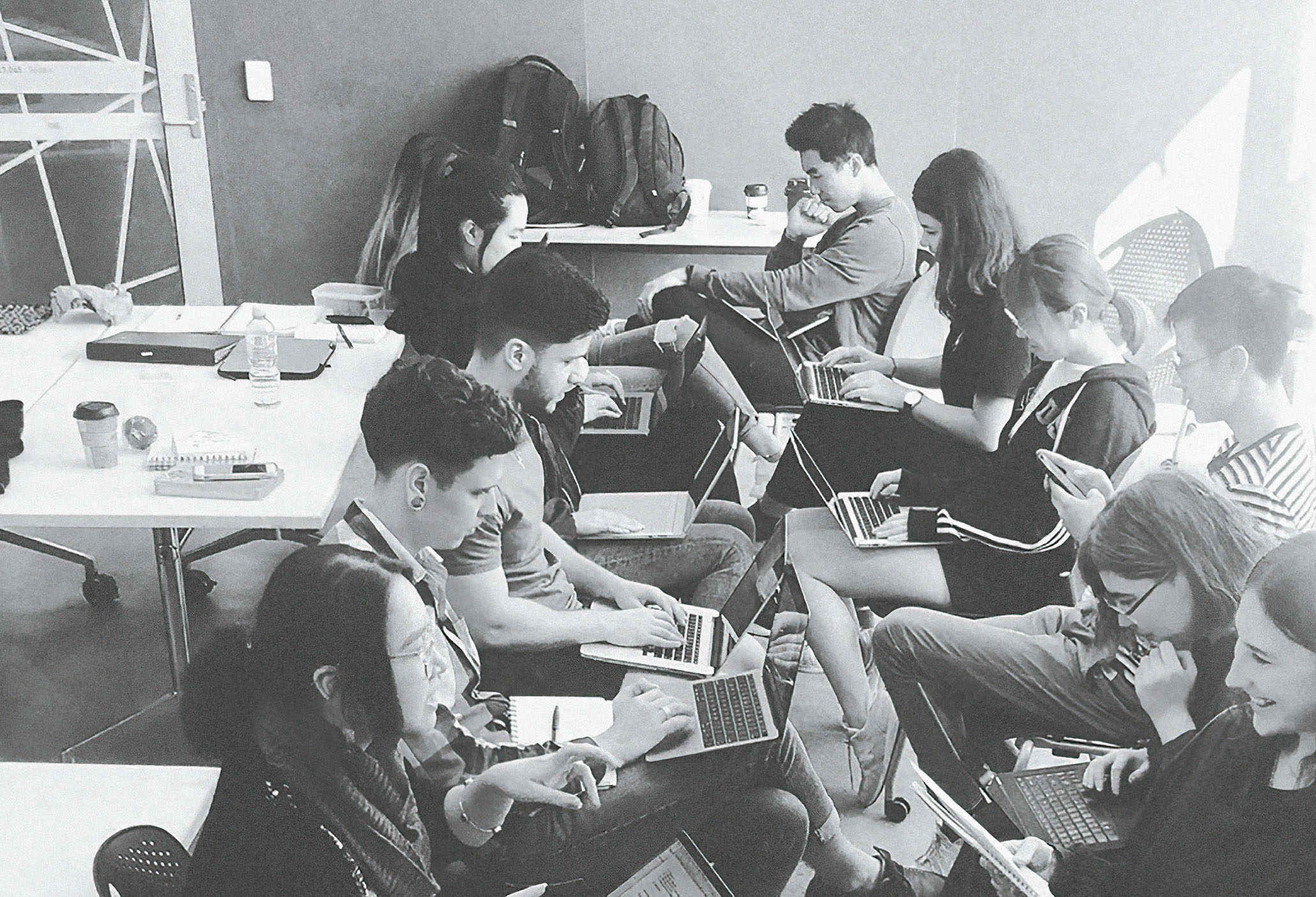Here at UTS VisCom, on Gadigal land, we believe that design can change the world. Look around. We live in a world of images, text, media and devices. A world designed. The future we face is one of challenge and possibility. How we design that future will shape the coming century. Here at UTS, we believe that a better world is still possible, a world of social equity, environmental sensitivity, inspiration, beauty. And we want you, here at UTS, to help design it.
#notdesignasusual
Find your speciality or build a skill set as a generalist
![]()
(image: in-studio concept speed dating)
Throughout the degree, you will work in ways that mirror professional studio culture, learning by applying your creative thinking to real world problems. You’ll develop industry experience through client-based collaborations, internships, global studios and study abroad programs. Pursue your personal passion by taking projects or electives in areas including branding, identity and strategic design; motion design; creative technologies; illustration and graphic storytelling; and photography and the moving image. And immerse yourself in the theories and histories of design though our cross-disciplinary Design Studies subjects.
The UTS Visual Communication degree fosters an environment of creative excellence and critical thinking informed by the rigorous research methods sought by industry. We strive to produce the graduates of the future: politically motivated, ethically aware, multidisciplinary in outlook, with the design and communication skills essential to tackle the complex problems of the coming century.
#notdesignasusual
Find your speciality or build a skill set as a generalist
- Social,
service & inclusive design
-
Strategic design, branding & identity
-
Creative technologies & digital experience design
-
Illustration
& graphic storytelling
-
Information & data visualisation
-
Photography
& the moving image
-
Motion
design & graphic animation
-
Print & digital publication design

(image: in-studio concept speed dating)
Throughout the degree, you will work in ways that mirror professional studio culture, learning by applying your creative thinking to real world problems. You’ll develop industry experience through client-based collaborations, internships, global studios and study abroad programs. Pursue your personal passion by taking projects or electives in areas including branding, identity and strategic design; motion design; creative technologies; illustration and graphic storytelling; and photography and the moving image. And immerse yourself in the theories and histories of design though our cross-disciplinary Design Studies subjects.
The UTS Visual Communication degree fosters an environment of creative excellence and critical thinking informed by the rigorous research methods sought by industry. We strive to produce the graduates of the future: politically motivated, ethically aware, multidisciplinary in outlook, with the design and communication skills essential to tackle the complex problems of the coming century.